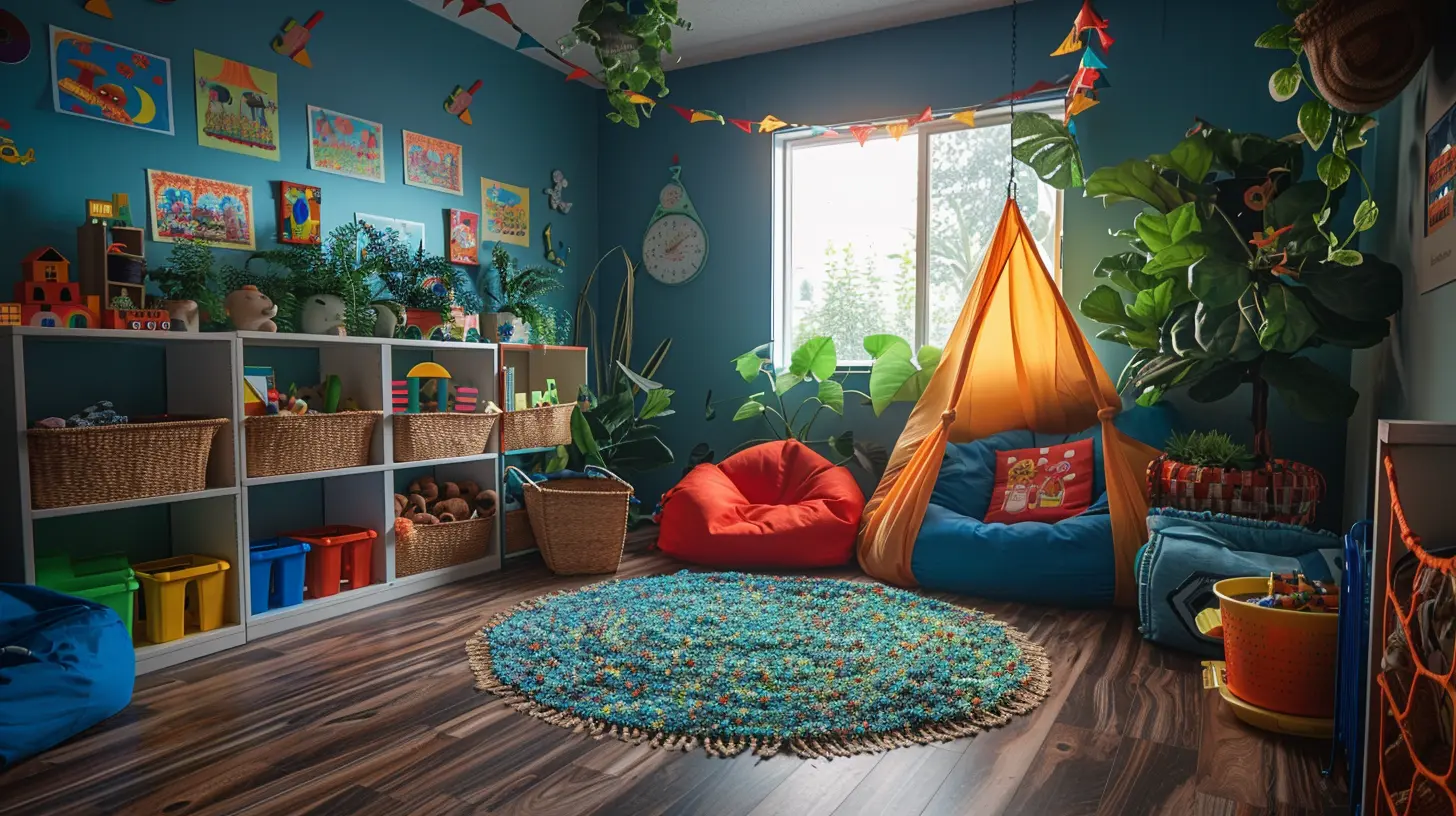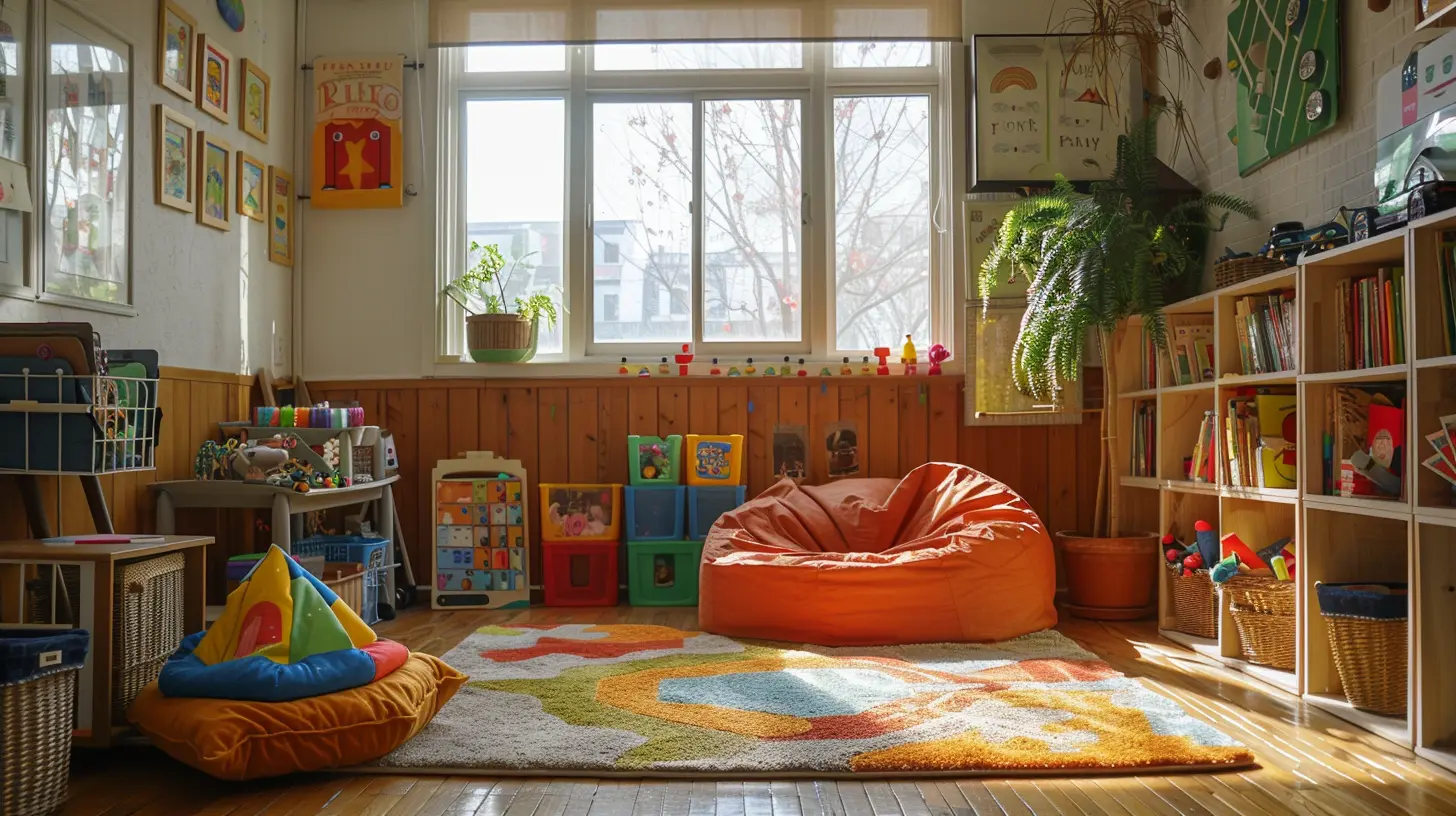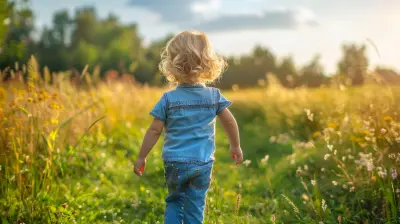Creating a Calm Environment for Your Kids at Home
21 September 2025
Let’s be real — parenting can sometimes feel like juggling water. One minute, everyone's fine, and the next, it's like a tiny tornado swept through your living room. Kids feed off energy like little sponges, soaking up stress even when we think we're hiding it well. So, creating a calm environment at home isn’t just about keeping the peace—it's about giving your kids the space to grow, thrive, and feel safe.
In this article, we’re diving into how to create that calm oasis for your children. Think peaceful vibes, less chaos, and a home that feels like a big, warm hug. Whether you’re dealing with toddlers, tweens, or something in between, these tips will help you create a harmonious space that benefits your child’s emotional and mental well-being.

Why a Calm Environment Matters
Ever noticed how your kid acts up when the house is noisy, cluttered, or tension’s running high? It’s not just coincidence. Kids are incredibly sensitive to their surroundings. A loud, messy, or stressful home can lead to emotional outbursts, trouble concentrating, or even anxiety.Creating a calm environment teaches children how to regulate their emotions. It lays a foundation for learning self-control, empathy, and resilience. Plus, let’s not forget—it makes life a whole lot easier for you too.

Start with the Energy — Yours!
Let’s talk about you for a second. Yep, you—the grown-up reading this. Children model behavior. If your mood is all over the place, your child’s probably riding that emotional rollercoaster right behind you.So how do you regulate your energy?
- Take breaks: Even five minutes of quiet time can reset your nerves.
- Use positive language: Instead of “Don’t scream!”, try “Let’s use our indoor voices.”
- Stay mindful: Breathe. Pause before reacting. You set the emotional tone at home.
Remember, calm isn’t about being perfect—it’s about being present and composed, even when things get messy.

Home Layout: Design for Serenity
You don’t need an HGTV makeover to create a peaceful vibe. A few tweaks can go a long way. Think minimalist, cozy, and functional.Declutter Like a Pro
Chaos in your home = chaos in your kid’s head. Clear the space, clear the mind. Less really is more when it comes to creating calm.- Donate toys your child has outgrown
- Use storage bins to hide clutter
- Keep play areas simple and uncluttered
A clean environment gives kids room to breathe—and think.
Create Calm Corners
Kids need a retreat, just like adults do. A calm-down corner or a quiet nook with soft pillows, books, and calming colors can do wonders. Think of it as their “recharging station.”Give it a name, like “quiet corner” or “peace place,” and encourage your child to use it when they need to reset.
Use Soft, Soothing Colors
Color affects mood—seriously! Try soft pastels, ocean blues, gentle greens, or earthy tones. These colors naturally lower stress and create a more relaxed atmosphere.Steer clear of neon shades or overly bright designs in bedrooms and relaxation areas. Save those for the playroom.

Create Rhythms, Not Rigid Routines
Children crave predictability. But let’s not confuse that with a strict, military-style schedule.Instead, establish daily rhythms. These are flexible routines that offer structure without a sense of restriction.
- Morning wake-up time and bedtime around the same hour
- Regular meal and snack times
- A consistent winding-down routine in the evening
Why does this work? Because kids feel more secure when they know what’s coming next. It reduces anxiety and decision fatigue—for both of you!
Noise Control: A Big Deal
Sound has a huge impact on stress levels. Loud TVs, shouting, or even constant background music can overstimulate kids.Go for Gentle Background Sounds
Think soothing music, nature sounds, or even a white noise machine—especially during rest times. Try Spotify playlists with lullabies or classical tunes made for kids.And don’t forget about the power of silence. Sometimes, less is more.
Encourage Quiet Moments
Kids don’t always need to be entertained. Encourage activities that promote quiet focus:- Puzzles
- Coloring
- Reading
- Building with blocks
These activities help them slow down and tune in to themselves.
The Power of Scent
This might surprise you, but scent is a powerful tool for calming the body and mind. Aromatherapy isn’t just for grown-up spas—it can work wonders for kids too.Use essential oils (safely, of course!) with calming scents like:
- Lavender
- Chamomile
- Vanilla
- Sandalwood
Diffuse them in the evening or sprinkle a tiny bit on pillows or stuffed animals. Just make sure your child doesn’t have allergies or sensitivities.
Communication: Speak Calm to Be Calm
Words have energy. How you communicate can either help diffuse or escalate a situation.Model Calm Language
Instead of yelling from across the house, go to your child and speak softly. Use eye contact and gentle phrasing, even during discipline.Try phrases like:
- “Let’s take a deep breath together.”
- “I can see you’re upset—want to talk about it?”
- “It’s okay to feel angry, but let’s find a calm way to handle it.”
Validate Their Feelings
Kids feel big emotions in little bodies. When you acknowledge those feelings instead of brushing them aside, they feel seen and heard.Say things like, “I know it’s hard when your toy breaks,” or “You’re feeling frustrated because you couldn’t go outside.”
Validation builds emotional security—which leads to a calmer kid.
Screen Time: Set Healthy Boundaries
Screens can stimulate or soothe, depending on how you use them. But too much fast-paced video content overstimulates kid brains, making them cranky, impatient, or hyper (sound familiar?).Set a Screen Schedule
Balance is key. Set limits that make sense for your family—maybe no screens an hour before bedtime or a designated tech-free time each day.Use screen time wisely—things like meditation apps for kids, relaxing bedtime stories, or slow-paced educational shows.
Bring Nature Inside
Nature is the ultimate stress-buster. When kids spend time outdoors, their mood improves, and their ability to focus increases. But even when you're stuck indoors, you can still bring the outside in.Add Houseplants or Natural Decor
Try easy-to-care-for plants like snake plants or spider plants. Not only are they pretty, but they purify the air and give off calming vibes.Decor with natural textures like wood, cotton, or linen also adds to that peaceful, grounded feel.
Let in Natural Light
Open those curtains! Natural sunlight helps regulate moods, sleep cycles, and energy levels. A well-lit room just feels… happier.
Bonding Time: The Heart of a Calm Home
A peaceful environment isn’t only about the physical stuff—it’s built on emotional connections.Schedule Time for One-on-Ones
Even 15 minutes of undivided attention can make your child feel valued. Play a game, read a book, or just talk.These moments reassure kids that they matter—and that safety and love are always available.
Practice Gratitude Together
Try ending the day with a simple gratitude ritual.Ask, “What’s one good thing that happened today?” It shifts focus from stress to joy and helps kids appreciate the calm, too.
Mindfulness for Kids
Mindfulness isn’t some woo-woo grown-up concept. Kids can learn to center themselves too. And the earlier they learn, the easier it becomes second nature.Try Simple Breathing Exercises
The “smell the flower, blow out the candle” trick works wonders.- Ask your child to slowly breathe in through their nose as if smelling a flower
- Then exhale like blowing out a candle
It’s simple, fun, and calming.
Use Mindful Activities
Introduce kid-friendly yoga, guided meditations, or even mindful coloring books. These tools help kids build emotional awareness—and strengthen that calm vibe at home.
Final Thoughts
Creating a calm environment for your kids at home doesn’t mean turning your house into a silent monastery. It’s about creating a space where your child feels grounded, loved, and safe to be themselves.Start small. Sometimes, it’s just adding a cozy reading nook, reducing background noise, or lighting up a lavender candle at bedtime. Little tweaks can make a big difference.
And remember—calm doesn’t mean quiet. It means emotionally safe. It means balanced. It means home.
all images in this post were generated using AI tools
Category:
Stay At Home MomsAuthor:

Maya Underwood
Discussion
rate this article
1 comments
Charlotte Taylor
Creating a calm environment is essential for children's well-being. By incorporating elements like structured routines, soothing colors, and minimal distractions, parents can foster a peaceful atmosphere that encourages emotional regulation and creativity, benefiting both kids and the entire family.
September 27, 2025 at 4:02 AM

Maya Underwood
Thank you for your insightful comment! I completely agree that a calm environment is vital for children's well-being and can positively impact the whole family.


